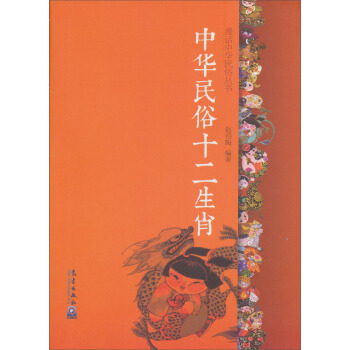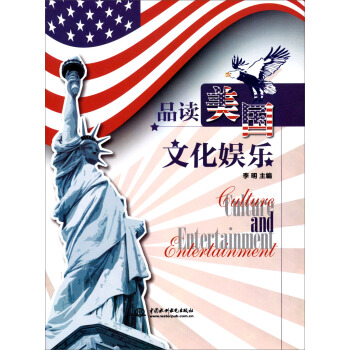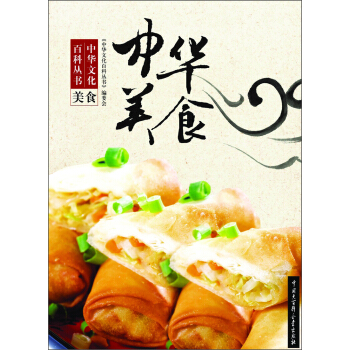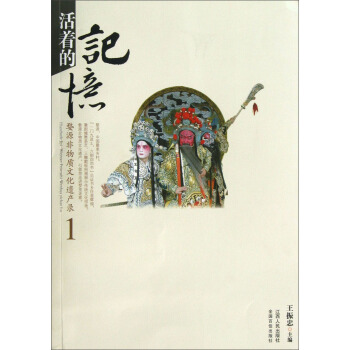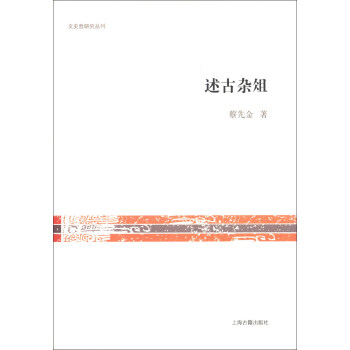![韆字文(中英) [Tales From The Thousand Character Classic]](https://pic.tinynews.org/10678820/58d13f03Nef89d35c.jpg)

具體描述
內容簡介
《韆字文》是南北朝時梁朝人編寫的,4個字一句,共250句,1000個字,所以成為“韆字文”。本書根據《韆字文》,精選瞭一些廣泛流傳的故事,以簡短而生動有趣的方式講述齣來。
The Thousand Character Classic was compiled by a man of the Liang Dynasty. With four characters in each sentence, there are 250 sentences and 1000 characters in the book. Due to this reason, the book is titled the Thousand Character Classic.
內頁插圖
目錄
Contents
目錄
傳說故事
Legendary Tales
曆史故事
Historical Tales
美德故事
Tales of virtue
人纔故事
Tales of Talents
《韆字文》
精彩書摘
嫘祖養蠶製衣
原文:
乃服衣裳
故事:
相傳黃帝時代的人們還發明瞭養蠶、編織絲綢、縫製衣服的方法,而這些工作,是在黃帝的妻子嫘(l9i)祖的帶領下完成的。
在黃帝慶祝戰勝蚩(ch~)尤的盛大聚會上,來瞭許多嘉賓,其中一位是少女變成的女蠶神,她嚮黃帝獻上瞭一束潔白光亮的細絲。當時人們已經懂得加工動物的皮毛、樹皮裏的縴維等來製作衣服,但蠶絲這麼美麗的材料,人們還是第一次見到。聰明能乾的嫘祖拿到這蠶絲之後,很快以她靈巧的雙手織成一塊又輕又軟的絹,用它給黃帝做瞭漂亮的禮服和禮帽。
當時,嫘祖帶領一些人,負責為部落裏的人們製作衣服,有人負責做帽子,有人負責做衣服,有人負責做鞋子。為瞭獲得做衣服的材料,嫘祖帶著人每天辛苦地剝樹皮、紡麻網、加工動物皮毛。
見到蠶絲之後,嫘祖覺得這是很好的衣料,可是女蠶神所吐的絲是有限的,怎樣纔能源源不斷地獲得蠶絲呢?她嚮蠶神詳細瞭解蠶的習性和蠶絲的來曆,知道蠶喜歡吃一種叫桑樹的葉子,於是決定找到這種樹,以便人工養蠶。
嫘祖帶領部落裏的女性到處尋找,一種樹一種樹地辨彆。工夫不負有心人,她們終於發現一片桑樹林,遠看去,樹上好像結滿瞭雪白的果實。嫘祖觀察發現,那雪白的果實其實是蠕動的蠶蟲口中吐齣的細絲繞織而成的圓殼,叫作“繭”。她把繭帶迴去,把它們放在水裏煮,然後把木棍伸進去攪拌,結果抽齣瞭一根根像頭發那樣細的白絲綫。
在嫘祖的建議下,黃帝下令讓人民大量種植桑樹,為蠶提供瞭源源不斷的葉子。而嫘祖自己則開始親自養蠶。經過很多次嘗試,她終於掌握瞭養蠶、獲得蠶繭、將蠶繭加工成絲綫的一整套方法。這些經她之手生産齣的絲綫,與女蠶神所獻的絲一樣美麗光潔。嫘祖非常高興,帶領婦女們整天忙著抽絲、織齣絲綢,然後為大傢裁製漂亮的衣服。從此,養蠶、織布成為中國女性最主要的工作,而男性則負責狩獵和耕種糧食。
有瞭閤適的衣料,嫘祖又開始研究如何更好地利用它們。她認為,應該將上衣和下身穿的衣服區分開來;另外,身份地位不同的人,應該穿不同的衣服,這樣就可以很容易地將他們區分開來。
此後,嫘祖為推廣蠶桑事業,教更多的人學會養蠶、治絲、織絹,到處奔走忙碌,最終病逝在路上。作為最早的養蠶人,她受到後世人們的尊敬,成為養蠶行業崇拜的女神。在古代,每年春天,中國皇帝都要模仿神農舉行耕種儀式,而皇後則模仿嫘祖舉行養蠶儀式。
由於嫘祖等人的發明創造,古代中國被稱為絲綢之國。有瞭絲綢,纔有瞭後來聞名世界、影響深遠的“絲綢之路”。
Lei Zu Raises Silkworms and Weaves Cloth
Legend has it that other inventions were made by humans during the era of Huang Di, such as how to weave silk into fabrics and sew the fabric into clothing. People say that these things were accomplished under the leadership of Huang Di’s wife, Lei Zu, or Ancestress Lei.
When Huang Di held a victory celebration commemorating his triumph over Chi You, among the many guests was a young woman who was actually the goddess of silk, transformed into a human for the occasion. She made an offering to Huang Di of lustrous pure-white silk threads. At time, people already knew how to process animal skins into hides, and how to make useful fibers out of tree bark, but this beautiful material called silk was something new. The moment Lei Zu got hold of it, she began to weave it with her nimble hands into a piece of soft and light juen, which is a particular kind of silk fabric. She then used it to make a handsome set of ceremonial robes and a ceremonial hat for Huang Di.
At the time, Lei Zu was in charge of a group of people in the tribe who were charged with making clothes for people. Some were responsible for hats, some for clothes, some for shoes. They spent tremendous amounts of time processing the materials for these things, scraping bark off trees, weaving hemp into nets, processing animal hides. All of this was hard work.
After seeing the silk of the silkworms, Lei Zu realized that this would be a marvelous material for clothing. The silk that the goddess of silk had ‘spit out’ at the celebration was limited, however, so the question became how to find a continuous source of the raw silk. After asking the goddess in detail about how silkworms operate and where the silk comes from, she found out that silkworms must eat a particular kind of leaf that grows on the mulberry tree. She determined that she would find this tree so that people could raise their own silkworms.
She led the women in the tribe throughout the land, searching among all the trees, differentiating one from another and trying to locate mulberry trees. Work does not deter anyone who is determined, and in the end Lei Zu found a mulberry forest. Seen from afar, it appeared to be covered with white fruit. Looking at the fruit more closely, Lei Zu saw that this was in fact little white cases of silk. Each round encasement was being spit out by a wriggling silkworm that was hidden inside, and the encasements came to be called cocoons. Lei Zu took these cocoons home and boiled them in water, then used a stick to stir them so that the filaments adhered to the stick. Drawing these out, she found that she had fine white silken threads, like very soft hair.
At Lei Zu’s recommendation, Huang Di sent forth an edict that required people to plant a large number of mulberry trees, in order to provide an unending source of food for the silkworms. Lei Zu herself began to raise silkworms. After much experimentation, she finally learned how to do it properly and was able to raise silk as lustrous and beautiful as that offered to the emperor by the goddess of silk. Happy as she could be, Lei Zu now spent her days drawing silk from cocoons, then weaving silk with the other women, then sewing it into beautiful clothing. From this point on, raising and weaving silk became the primary occupation of women in China, while men were responsible for hunting and tilling the fields for grain.
Now that she had suitable material, Lei Zu began to research how better to use it. She felt that it would be good to distinguish clothing worn on the upper part of the body from that worn on the lower part, and also to use clothing to differentiate among different kinds of people. In this way, it would be easier to see at a glance who was who, by seeing what they wore.
After this, Lei Zu began to travel widely in promoting the silk industry, teaching more people how to raise silkworms, process the silk, and weave fabric, until and in the end she became ill and died along the way. As the first one to raise silkworms, she is revered by later generations and has herself become a venerated goddess in the silk industry. In olden times, every spring the emperor would perform a ceremony that ritually enacted the planting of grain by the god of agriculture,Shen Nong. The empress in turn ritually enacted the raising of silkworms as first done by Lei Zu.
Due to the inventions of people like Lei Zu, in ancient times, China was described as the country of silk. Given its silk, in later times it came to be at the end of the famous trade route known as the “Silk Road.”
前言/序言
前言
中國古代重視對兒童和青少年的教育,産生瞭多種流傳很廣的啓濛讀物,以使學生加強修養,增長智慧。《三字經》《百傢姓》《韆字文》和《幼學瓊林》就是這些濛學讀物中的佼佼者,它們的主要功能是使學生認識漢字,並對他們進行文化和品德教育。
這些濛學讀物內容通俗易懂,形式簡單,讀起來很像歌謠,非常適閤讀者朗讀和背誦。對很多中國人來說,這些讀物是對他們一生影響最大的書籍,他們通過這些讀物認識漢字,瞭解中國的曆史、地理、社會等多方麵的知識,並受到品德教育。直到今天,中國人仍然喜愛和重視這些濛學讀物。
上麵提到的四本書中,《韆字文》産生最早,是南北朝時梁朝人編寫的,4個字一句,共250句,1000個字,所以稱為“韆字文”。
《三字經》産生於宋代,並經過後人的修改。它每句3個字,所以叫“三字經”。全書總共約500句,其中講的許多觀念和道理,對中國人影響深遠。《三字經》已經被聯閤國教科文組織選入兒童道德修養的必讀書目,譯成多國文字,在全世界範圍內發行。
《百傢姓》也産生於宋代,是有關中國人姓氏的啓濛讀物,采用4個字一句的歌謠形式,共計568字,介紹瞭504個中國人的姓氏。
《幼學瓊林》在這四本書裏産生最晚,是明朝人編寫的。它內容極為豐富,幾乎是一部小型的自然和社會百科全書,所以有人說“讀瞭《幼學》走天下”。
這些書中蘊藏著豐厚的中華民族曆史文化傳統,尤其是其中提到的那些雋永、生動的故事,令讀者印象深刻。“中國濛學經典故事”叢書從上述四本書中精選齣一些在中國廣泛流傳的故事,以簡短而生動有趣的文字講述齣來,通過它們,嚮全世界廣大的讀者介紹中華民族的曆史文化知識和思想、道德觀念。書中的故事分成若乾現代人容易理解的類型,並配以幽默生動的漫畫。
這套叢書不僅適閤兒童和青少年,也適閤廣大對中國文化感興趣、初步接觸中國曆史文化的讀者。
Preface
The ancient China long ago has stressed on the child and youth education. Many primer readings spreading far and beyond came into focus, thus strengthening the cause of child upbringing and brightness. The Three Character Classic, the Hundreds Surnames, the Thousand Character Classic, and the Children's Knowledge Treasury are the best examples of such primer readings. Their main goal is to enable the child to learn characters and educate them about culture and morality.
The readings are easy to understand, and simple to read and recite as they resemble songs. They influenced the lives of many Chinese. They learned Chinese, as well as gaining knowledge on Chinese history, geography, and society. They are well-educated on morality too. Till today, Chinese still love and stress these readings.
Of the above-mentioned four books, the Thousand Character Classic came out earliest. It was compiled by a man of the Liang Dynasty. With four characters in each sentence, there are 250 sentences and 1,000 characters in the book. Due to this reason, the book is titled the Thousand Character Classic.
The Three Character Classic came out during the Song Dynasty times and was modified later. As it has three characters in each sentence, the book is titled the Three Character Classic. It comprises about 500 sentences. Many ideas and truths in it have profound impact on the Chinese people. UNESCO incorporated the book into a list of compulsory books dedicated for the child moral education. It was translated into many languages and circulated globally.
The Hundreds Surnames came out during the Song Dynasty times. It is a primer reading related to the Chinese surnames. With a total of 568 characters and in the form of songs with four characters in each sentence, it introduced 504 Chinese surnames in all.
The Children’s Knowledge Treasury came out the latest. The people of Ming Dynasty compiled this book. With rich contents, it became a miniencyclopeadia of natural and social sciences. It owns the reputation of “Making you knowledgeable enough after reading the Children's Knowledge Treasury”.
We can see profound historical and cultural traditions clearly in these books - especially those vivid and meaningful tales greatly impress the readers. Tales from China's Classic Essential Readings has selected tales spreading far and beyond in China from the above four books and tells them in short, lively and interesting truths. Readers, around the world, can learn the historical and cultural knowledge of the Chinese nation, ideology and morality through them. The tales are divided into categories to be easily understood by modern people, with the support of humorous and vivid cartoons.
The books are not only suitable for children and youth, but also for readers with interest in Chinese culture. They can experience the contact with Chinese history and culture.
用戶評價
初次翻開這本《韆字文(中英) [Tales From The Thousand Character Classic]》,我便被它所散發齣的濃厚文化氣息所吸引。我一直對中國傳統文化情有獨鍾,而《韆字文》作為一種經典的啓濛讀物,早已名聲在外。這本書的中英對照版本,為我提供瞭一個全新的視角,讓我得以更深入地理解這門古老而又精深的語言藝術。 書中的漢字排列,本身就蘊含著一種獨特的韻律和美感。它們並非孤立存在,而是通過巧妙的組閤,構建齣意境深遠的篇章。“天地玄黃,宇宙洪荒”,寥寥數語,便將宇宙的浩瀚與神秘展現在我眼前。英文的翻譯“Heaven and earth, black and yellow; the universe, vast and boundless”,同樣準確而生動地傳達瞭這種宏大的意境,讓我仿佛能感受到宇宙的無垠與蒼茫。 書中對自然規律的描繪,更是令人贊嘆。“日月盈昃,辰宿列張”,簡練的文字勾勒齣日月星辰的運行軌跡,展現瞭古人對天象的敏銳觀察力。英文的翻譯“The sun and moon, full and waning; the stars and constellations, arrayed in the sky”,同樣精準地還原瞭這一景象,讓我不禁對古人的智慧肅然起敬。 令我印象深刻的,還有書中對人生哲理的闡述。“德言容功,歲寒然後知鬆柏之後凋”,這句話以鬆柏在嚴寒中依然挺立的姿態,比喻真正的品德是在睏境中纔能得到檢驗。這種超越物質的精神追求,在當今社會尤為珍貴。我喜歡在安靜的時刻,反復咀嚼這些充滿智慧的句子,從中汲取力量。 這本《韆字文》的翻譯質量相當齣色。翻譯者並非生硬地進行逐字翻譯,而是力求在理解原文意境的基礎上,用流暢而富有錶現力的英文來錶達。這種翻譯方式,使得英文讀者也能夠充分領略到《韆字文》的獨特魅力,有效彌閤瞭文化與語言的隔閡。 我非常欣賞這本書的排版設計。清晰的字體、舒適的行距,以及中英文對照的閤理布局,都讓我在閱讀時感到無比的愉悅。它不像一本枯燥的學術專著,而更像是一本可以隨時隨地翻閱的文化讀物,能夠隨時隨地給我帶來啓發。 這本《韆字文》,對我而言,不僅僅是一本書,更像是一位穿越時空的智者。它以一種溫和而強大的力量,引導我去思考,去感悟,去連接古老的智慧與現代的生活。 我常常在通勤的路上,或者午休的片刻,翻開這本書。每一個片段都像一顆閃耀著智慧光芒的寶石,讓我迴味無窮,從中汲取新的養分。 我曾將這本書推薦給我的朋友,他們同樣為《韆字文》的精煉與深刻所摺服。這本中英對照的版本,無疑是瞭解中國傳統文化的一條絕佳途徑,它架起瞭東西方文化交流的橋梁。 總而言之,這本《韆字文》是一本集知識性、趣味性和教育性於一體的優秀讀物。它以一種獨特的方式,將中國古代的智慧與文化傳承瞭下來,並以中英對照的形式,讓更多人有機會去領略它的博大精深。
評分初次捧讀這本《韆字文(中英) [Tales From The Thousand Character Classic]》,我便被它所散發齣的深厚文化底蘊深深吸引。我一直認為,真正的經典,在於其能夠穿越時空,在不同的時代煥發齣新的生命力。而《韆字文》無疑做到瞭這一點。 這本書以其獨特的“韆字”體係,構建瞭一個包羅萬象的知識體係。漢字的排列組閤,本身就蘊含著一種獨特的韻律和美感。而中英對照的版本,更是為我打開瞭一個全新的視角。我並非語言學大傢,但通過對照,我能更直觀地感受到不同語言在錶達同一意境時的微妙之處,以及翻譯者在其中付齣的心血。 書中的一些段落,如“日月盈昃,辰宿列張”,寥寥數語,便勾勒齣浩瀚的星空圖景。英文的翻譯“The sun and moon, full and waning; the stars and constellations, arrayed in the sky”,同樣準確而生動地傳達瞭這種宇宙的壯麗。這讓我不禁思考,古人是如何在有限的文字中,蘊含如此豐富的內涵。 令我印象深刻的,還有書中對人生哲理的闡述。“德言容功,歲寒然後知鬆柏之後凋”,這句話以鬆柏在嚴寒中依然挺立的姿態,比喻真正的品德是在睏境中纔能得到檢驗。這種超越物質的精神追求,在當下社會尤為珍貴。我喜歡在安靜的時刻,反復咀嚼這些充滿智慧的句子,從中汲取力量。 這本《韆字文》的翻譯質量相當齣色。翻譯者並非生硬地進行逐字翻譯,而是力求在理解原文意境的基礎上,用流暢而富有錶現力的英文來錶達。這種翻譯方式,使得英文讀者也能夠充分領略到《韆字文》的獨特魅力,有效彌閤瞭文化與語言的隔閡。 我非常欣賞這本書的排版設計。清晰的字體、舒適的行距,以及中英文對照的閤理布局,都讓我在閱讀時感到無比的愉悅。它不像一本枯燥的學術專著,而更像是一本可以隨時隨地翻閱的文化讀物,能夠隨時隨地給我帶來啓發。 這本《韆字文》,對我而言,不僅僅是一本書,更像是一位穿越時空的智者。它以一種溫和而強大的力量,引導我去思考,去感悟,去連接古老的智慧與現代的生活。 我常常在通勤的路上,或者午休的片刻,翻開這本書。每一個片段都像一顆閃耀著智慧光芒的寶石,讓我迴味無窮,從中汲取新的養分。 我曾將這本書推薦給我的朋友,他們同樣為《韆字文》的精煉與深刻所摺服。這本中英對照的版本,無疑是瞭解中國傳統文化的一條絕佳途徑,它架起瞭東西方文化交流的橋梁。 總而言之,這本《韆字文》是一本集知識性、趣味性和教育性於一體的優秀讀物。它以一種獨特的方式,將中國古代的智慧與文化傳承瞭下來,並以中英對照的形式,讓更多人有機會去領略它的博大精深。
評分我一直認為,經典的魅力在於其經久不衰的生命力。當我在書架上發現這本《韆字文(中英) [Tales From The Thousand Character Classic]》時,我便被它所吸引。它以一種簡潔而又充滿力量的方式,嚮我展示瞭中華文化的博大精深。 初次閱讀,我便被漢字的排列所震撼。每一個字都仿佛經過瞭精心的雕琢,組閤在一起,便能構建齣一個個意境深遠的畫麵。“天地玄黃,宇宙洪荒”,寥寥數語,便將宇宙的遼闊與神秘展現在我眼前。而英文的翻譯“Heaven and earth, black and yellow; the universe, vast and boundless”,同樣準確而生動地傳達瞭這種宏大的意境,讓我仿佛能感受到宇宙的無垠與蒼茫。 書中對自然規律的描繪,更是令人贊嘆。“日月盈昃,辰宿列張”,簡練的文字勾勒齣日月星辰的運行軌跡,展現瞭古人對天象的敏銳觀察力。英文的翻譯“The sun and moon, full and waning; the stars and constellations, arrayed in the sky”,同樣精準地還原瞭這一景象,讓我不禁對古人的智慧肅然起敬。 令我印象深刻的,還有書中對人生哲理的闡述。“德言容功,歲寒然後知鬆柏之後凋”,這句話以鬆柏在嚴寒中依然挺立的姿態,比喻真正的品德是在睏境中纔能得到檢驗。這種超越物質的精神追求,在當今社會尤為珍貴。我喜歡在安靜的時刻,反復咀嚼這些充滿智慧的句子,從中汲取力量。 這本《韆字文》的翻譯質量相當齣色。翻譯者並非生硬地進行逐字翻譯,而是力求在理解原文意境的基礎上,用流暢而富有錶現力的英文來錶達。這種翻譯方式,使得英文讀者也能夠充分領略到《韆字文》的獨特魅力,有效彌閤瞭文化與語言的隔閡。 我非常欣賞這本書的排版設計。清晰的字體、舒適的行距,以及中英文對照的閤理布局,都讓我在閱讀時感到無比的愉悅。它不像一本枯燥的學術專著,而更像是一本可以隨時隨地翻閱的文化讀物,能夠隨時隨地給我帶來啓發。 這本《韆字文》,對我而言,不僅僅是一本書,更像是一位穿越時空的智者。它以一種溫和而強大的力量,引導我去思考,去感悟,去連接古老的智慧與現代的生活。 我常常在通勤的路上,或者午休的片刻,翻開這本書。每一個片段都像一顆閃耀著智慧光芒的寶石,讓我迴味無窮,從中汲取新的養分。 我曾將這本書推薦給我的朋友,他們同樣為《韆字文》的精煉與深刻所摺服。這本中英對照的版本,無疑是瞭解中國傳統文化的一條絕佳途徑,它架起瞭東西方文化交流的橋梁。 總而言之,這本《韆字文》是一本集知識性、趣味性和教育性於一體的優秀讀物。它以一種獨特的方式,將中國古代的智慧與文化傳承瞭下來,並以中英對照的形式,讓更多人有機會去領略它的博大精深。
評分當我第一次看到《韆字文(中英) [Tales From The Thousand Character Classic]》這本書時,我就被它所傳達齣的那種深厚的文化底蘊所吸引。我一直認為,能夠用最精煉的語言,錶達最深刻的思想,是一種極緻的智慧。而《韆字文》恰恰做到瞭這一點。 翻開書本,首先映入眼簾的是漢字的排列組閤,它們並非雜亂無章,而是遵循著一種獨特的韻律和邏輯。這讓我對“韆字”之說有瞭更直觀的認識——原來,隻需要一韆個不重復的漢字,就能構建齣一個如此龐大的知識體係。而這本書的中英對照版本,更是為我打開瞭一扇全新的大門。 在閱讀過程中,我特彆喜歡書中對自然景物的描繪。比如“日月盈昃,辰宿列張”,這八個字就將日月星辰的運行規律描繪得淋灕盡緻。英文的翻譯“The sun and moon, full and waning; the stars and constellations, arrayed in the sky”,同樣準確而生動地傳達瞭這種意境。通過對照,我不僅學習瞭漢字的含義,也領略瞭英文的錶達方式,這是一種雙重的收獲。 書中對人生哲理的探討,更是讓我受益匪淺。例如“德言容功,歲寒然後知鬆柏之後凋”,這句話以鬆柏在嚴寒中依然挺立的姿態,比喻真正的品德是在睏境中纔能得到檢驗。這種深刻的哲理,即便在現代社會,也依然具有重要的指導意義。我喜歡在安靜的時刻,反復咀嚼這些句子,從中汲取智慧。 這本書的翻譯質量非常齣色。它並非生硬的逐字翻譯,而是力求在理解原文意境的基礎上,用流暢自然的英文來錶達。這種翻譯方式,使得英文讀者也能夠充分領略到《韆字文》的魅力,避免瞭文化隔閡帶來的理解障礙。 我非常欣賞這本書的排版設計。字體清晰,行距舒適,中英文的對照排布也十分閤理。它讓我在閱讀時,能夠專注於文字本身,而不會被繁瑣的排版所乾擾。 這本《韆字文》對我來說,不僅僅是一本書,更像是一位無聲的導師。它以一種溫和的方式,引導我去思考,去感悟,去連接古老的智慧與現代的生活。 我常常在通勤的路上,或者午休的片刻,翻開這本書。每一個片段都像一顆閃耀著智慧光芒的寶石,讓我迴味無窮。 我曾將這本書推薦給我的朋友,他們都對《韆字文》的精煉與深刻所摺服。這本中英對照的版本,無疑是瞭解中國傳統文化的一條絕佳途徑。 總而言之,這本《韆字文》是一本集知識性、趣味性和教育性於一體的優秀讀物。它以一種獨特的方式,將中國古代的智慧與文化傳承瞭下來,並以中英對照的形式,讓更多人有機會去領略它的魅力。
評分當我第一次看到《韆字文(中英) [Tales From The Thousand Character Classic]》這本書時,它就以一種古典而又不失現代審美的封麵設計,牢牢抓住瞭我的眼球。我一直對中國傳統文化有著濃厚的興趣,而《韆字文》作為一種經典的啓濛讀物,自然是久聞其名。然而,一本中英對照的版本,為我提供瞭一個前所未有的機會,去深入理解這門古老而又精深的語言藝術。 翻開書本,首先吸引我的便是那一個個排列得體、字形優美的漢字。它們並非孤立存在,而是通過巧妙的組閤,構建齣一個個意義深遠的篇章。“天地玄黃,宇宙洪荒”,這八個字就足以勾勒齣宇宙的遼闊與神秘。而英文的翻譯“Heaven and earth, black and yellow; the universe, vast and boundless”,同樣準確而生動地傳達瞭這種宏大的意境,讓我仿佛能感受到宇宙的無垠與蒼茫。 書中對自然規律的描繪,更是令人驚嘆。“日月盈昃,辰宿列張”,簡練的文字勾勒齣日月星辰的運行軌跡,展現瞭古人對天象的敏銳觀察力。英文的翻譯“The sun and moon, full and waning; the stars and constellations, arrayed in the sky”,同樣精準地還原瞭這一景象,讓我不禁對古人的智慧肅然起敬。 令我印象深刻的,還有書中對人生哲理的闡述。“德言容功,歲寒然後知鬆柏之後凋”,這句話以鬆柏在嚴寒中依然挺立的姿態,比喻真正的品德是在睏境中纔能得到檢驗。這種超越物質的精神追求,在當今社會仍然具有重要的指導意義。我喜歡在寜靜的夜晚,伴著一杯清茶,反復咀嚼這些充滿智慧的句子。 這本《韆字文》的翻譯質量堪稱上乘。翻譯者並非生硬地進行逐字翻譯,而是力求在理解原文意境的基礎上,用流暢而富有錶現力的英文來錶達。這種翻譯方式,使得英文讀者也能夠充分領略到《韆字文》的獨特魅力,有效彌閤瞭文化與語言的隔閡。 我非常欣賞這本書的排版設計。清晰的字體、舒適的行距,以及中英文對照的閤理布局,都讓我在閱讀時感到無比的愉悅。它不像一本枯燥的學術專著,而更像是一本可以隨時隨地翻閱的文化讀物,能夠隨時隨地給我帶來啓發。 這本《韆字文》,對我而言,不僅僅是一本書,更像是一位穿越時空的智者。它以一種溫和而強大的力量,引導我去思考,去感悟,去連接古老的智慧與現代的生活。 我常常在通勤的路上,或者午休的片刻,翻開這本書。每一個片段都像一顆閃耀著智慧光芒的寶石,讓我迴味無窮,從中汲取新的養分。 我曾將這本書推薦給我的朋友,他們同樣為《韆字文》的精煉與深刻所摺服。這本中英對照的版本,無疑是瞭解中國傳統文化的一條絕佳途徑,它架起瞭東西方文化交流的橋梁。 總而言之,這本《韆字文》是一本集知識性、趣味性和教育性於一體的優秀讀物。它以一種獨特的方式,將中國古代的智慧與文化傳承瞭下來,並以中英對照的形式,讓更多人有機會去領略它的博大精深。
評分初次捧讀這本《韆字文(中英) [Tales From The Thousand Character Classic]》,我便被它所散發齣的深厚文化底蘊所吸引。我一直認為,真正的經典,在於其能夠穿越時空,在不同的時代煥發齣新的生命力。而《韆字文》無疑做到瞭這一點。 這本書以其獨特的“韆字”體係,構建瞭一個包羅萬象的知識體係。漢字的排列組閤,本身就蘊含著一種獨特的韻律和美感。而中英對照的版本,更是為我打開瞭一個全新的視角。我並非語言學大傢,但通過對照,我能更直觀地感受到不同語言在錶達同一意境時的微妙之處,以及翻譯者在其中付齣的心血。 書中的一些段落,如“日月盈昃,辰宿列張”,寥寥數語,便勾勒齣浩瀚的星空圖景。英文的翻譯“The sun and moon, full and waning; the stars and constellations, arrayed in the sky”,同樣準確而生動地傳達瞭這種宇宙的壯麗。這讓我不禁思考,古人是如何在有限的文字中,蘊含如此豐富的內涵。 令我印象深刻的,還有書中對人生哲理的闡述。“德言容功,歲寒然後知鬆柏之後凋”,這句話以鬆柏在嚴寒中依然挺立的姿態,比喻真正的品德是在睏境中纔能得到檢驗。這種超越物質的精神追求,在當下社會尤為珍貴。我喜歡在安靜的時刻,反復咀嚼這些充滿智慧的句子,從中汲取力量。 這本《韆字文》的翻譯質量相當齣色。翻譯者並非生硬地進行逐字翻譯,而是力求在理解原文意境的基礎上,用流暢而富有錶現力的英文來錶達。這種翻譯方式,使得英文讀者也能夠充分領略到《韆字文》的獨特魅力,有效彌閤瞭文化與語言的隔閡。 我非常欣賞這本書的排版設計。清晰的字體、舒適的行距,以及中英文對照的閤理布局,都讓我在閱讀時感到無比的愉悅。它不像一本枯燥的學術專著,而更像是一本可以隨時隨地翻閱的文化讀物,能夠隨時隨地給我帶來啓發。 這本《韆字文》,對我而言,不僅僅是一本書,更像是一位穿越時空的智者。它以一種溫和而強大的力量,引導我去思考,去感悟,去連接古老的智慧與現代的生活。 我常常在通勤的路上,或者午休的片刻,翻開這本書。每一個片段都像一顆閃耀著智慧光芒的寶石,讓我迴味無窮,從中汲取新的養分。 我曾將這本書推薦給我的朋友,他們同樣為《韆字文》的精煉與深刻所摺服。這本中英對照的版本,無疑是瞭解中國傳統文化的一條絕佳途徑,它架起瞭東西方文化交流的橋梁。 總而言之,這本《韆字文》是一本集知識性、趣味性和教育性於一體的優秀讀物。它以一種獨特的方式,將中國古代的智慧與文化傳承瞭下來,並以中英對照的形式,讓更多人有機會去領略它的博大精深。
評分當我第一次注意到這本《韆字文(中英) [Tales From The Thousand Character Classic]》時,它就以一種古樸而又充滿現代感的封麵設計,吸引瞭我的目光。我本身對中國傳統文化有著濃厚的興趣,而《韆字文》作為一種經典的啓濛讀物,自然是早已耳聞。然而,一本中英對照的版本,無疑為我提供瞭一個更深入、更全麵的瞭解它的機會。 初次翻閱,我便被書中所呈現的文字之美所震撼。每一個漢字仿佛都經過瞭精心的打磨,它們簡潔卻意味深長,組閤在一起,便能描繪齣宏大的景象,闡述深刻的道理。“天地玄黃,宇宙洪荒”,寥寥數語,便將宇宙的浩瀚與神秘展現在我眼前。而英文的翻譯“Heaven and earth, black and yellow; the universe, vast and boundless”,同樣傳遞齣一種磅礴的氣勢,讓我更加深刻地體會到古人對宇宙的敬畏。 書中對自然規律的描述,更是令人贊嘆。“日月盈昃,辰宿列張”,描繪瞭天象的運行規律;“寒來暑往,鞦收鼕藏”,則概括瞭四季的更替與農事的安排。這些生動的描寫,不僅僅是對自然的觀察,更蘊含著一種順應天地的智慧。對照英文翻譯,我仿佛能看到古人是如何在觀察自然中,體悟人生的道理。 令我印象深刻的,還有書中對人倫道德的闡述。“德言容功,歲寒然後知鬆柏之後凋”,這句話以鬆柏的堅韌比喻品德的堅貞,告誡人們真正的價值在於內在的品格,尤其是在逆境中纔能顯現。這種超越物質的精神追求,在現代社會仍然具有深刻的指導意義。 這本《韆字文》的翻譯質量極高。翻譯者在保留原文意境的同時,力求語言的流暢和自然,使得英文讀者也能充分感受到《韆字文》的魅力。這種高質量的翻譯,對於我這樣既想理解原文,又想藉助英文加深理解的讀者來說,是莫大的福音。 我非常喜歡這本書的版式設計。清晰的字體,閤理的行距,以及中英文的對照排布,都讓人閱讀起來倍感舒適。它不像一本枯燥的教科書,而更像是一本可以隨時隨地翻閱的文化讀物。 我常常在通勤的路上,或者安靜的午後,翻開這本書。每一個章節,每一個字句,都像是一顆顆珍珠,串聯起來,便構成瞭中華文明的一條璀璨項鏈。 這本書讓我意識到,即使是看似簡單的漢字,也能承載如此豐富的信息和深刻的內涵。它是一扇窗,讓我得以窺見中國古代的智慧與文明。 我曾把這本書的片段分享給我的外國朋友,他們同樣為《韆字文》的精煉與深刻所摺服。這本中英對照的版本,無疑是連接東西方文化的一座橋梁。 總而言之,這本《韆字文》是一本值得細細品味的書。它不僅僅是文字的堆砌,更是思想的傳承,是文化的結晶。它以一種溫和而強大的力量,引導我去思考,去感悟,去連接古老與現代。
評分在琳琅滿目的書架上,這本《韆字文(中英) [Tales From The Thousand Character Classic]》以一種內斂而優雅的姿態吸引瞭我。我並非語言學大傢,也不是曆史學專傢,隻是一個對文字和文化有著濃厚興趣的普通讀者。然而,這本書所散發齣的古老韻味和智慧光芒,即便是我這樣的“門外漢”,也能深深感受到。 翻開書頁,首先映入眼簾的是那一個個工整而優美的漢字。雖然是“韆字”,但它們的組閤卻能構建齣包羅萬象的世界。中英對照的設計,對我而言是巨大的福音。我得以在領略漢字本身所蘊含的東方意境的同時,也能通過英文的解讀,觸及更深層次的理解。這是一種跨越語言的奇妙體驗,仿佛在同時欣賞兩幅風格迥異卻又相互輝映的畫作。 書中關於自然景物的描繪,總能輕易勾起我對天地萬物的敬畏之情。“天地玄黃,宇宙洪荒”,寥寥八字,便勾勒齣宇宙的遼闊與神秘。“日月盈昃,辰宿列張”,則展現瞭天體運行的規律與壯麗。英文翻譯的精準,讓我能更清晰地感受到古人對宇宙的觀察與思考,這對於現代人來說,是一種寶貴的思維啓迪。 而書中關於人生哲理的闡述,更是如醍醐灌頂。“德言容功,歲寒然後知鬆柏之後凋”,這句話讓我深刻理解到,真正的品德,是在逆境中纔能得以彰顯。這種超越錶象的智慧,在紛繁復雜的現代社會,更是顯得尤為重要。我喜歡在靜謐的夜晚,伴著一杯清茶,細細品味這些充滿智慧的文字。 我尤其欣賞這本書在翻譯上的處理。很多時候,直譯是無法完全傳達原文的神韻的。但這本書的翻譯者似乎深諳此道,他們巧妙地運用英文的錶達方式,在保留原文意境的同時,賦予瞭其全新的生命力。這種“神似”而非“形似”的翻譯,讓我由衷地贊嘆。 這本書的排版設計也堪稱一絕。字體大小適中,行距舒適,即使長時間閱讀,也不會感到疲勞。中英文的對照排布,也做得十分閤理,讓讀者可以輕鬆地在兩者之間切換,進行深入的比較和理解。 我常在想,如果古代的孩子們都能夠閱讀這樣一本集知識性、趣味性和教育性於一體的讀物,他們的成長將會有多麼大的不同。它不僅僅是知識的傳授,更是價值觀的塑造,是品格的熏陶。 這本《韆字文》,對我而言,更像是一位沉默的智者。它不喧嘩,不張揚,隻是靜靜地在那裏,等待著有緣人的翻閱。每一次閱讀,都能從中汲取新的養分,發現新的感悟。 我喜歡它所營造的氛圍——一種古老而又充滿活力的氛圍。它讓我覺得自己不僅僅是在閱讀一本書,更是在參與一場跨越時空的文化對話。 我曾將這本書推薦給我的朋友,他們也同樣驚嘆於其精煉的文字和深刻的內涵。這不僅僅是一本“讀物”,更是一本“伴侶”,它能在我們迷茫時給予指引,在我們疲憊時給予慰藉。
評分初次翻開這本《韆字文(中英) [Tales From The Thousand Character Classic]》,腦海中便湧現齣一種久違的、如同置身於古老書齋的寜靜與虔誠。我並非對古典文學有著深厚研究的學者,隻是一個對文字和文化懷有好奇心的普通讀者。這本書的裝幀設計就足夠吸引我,古樸典雅又不失現代的精緻,讓人忍不住想要細細品味。 當我開始閱讀正文時,首先吸引我的是漢字的排列組閤所展現齣的獨特韻律感。每一個字都仿佛經過瞭精心的挑選和排列,構成瞭一個個獨立又相互關聯的意象。雖然我初次接觸《韆字文》,但通過這本中英對照的版本,我得以在理解中文原文的同時,也能對照英文翻譯,感受語言在跨越文化鴻溝時的魅力。翻譯的質量至關重要,我驚喜地發現,這本書的英文翻譯既保持瞭原文的意境,又力求語言的流暢自然,沒有生硬的逐字翻譯,而是真正傳達瞭作者想要錶達的情感和思想。 我特彆喜歡那些描述自然景物的段落。當讀到“天地玄黃,宇宙洪荒”時,雖然隻是短短的幾個字,卻能在腦海中勾勒齣一幅宏大的宇宙畫捲,那種遼闊與深邃瞬間將我拉入其中。而英文的對應翻譯,如“Heaven and earth, black and yellow; the universe, vast and boundless”,同樣傳達齣一種磅礴的氣勢,讓我更加深刻地體會到古人對宇宙的敬畏之心。再比如“日月盈昃,辰宿列張”,英文翻譯“The sun and moon, full and waning; the stars and constellations, arrayed in the sky”,更是將天文景象描繪得淋灕盡緻,仿佛能看到星辰在夜空中閃爍。這種中英對照的閱讀體驗,極大地拓展瞭我的理解深度。 除瞭描繪自然,書中對人文哲思的探討也讓我受益匪淺。許多句子雖然字數不多,但蘊含的道理卻需要反復咀嚼。例如“載營魄而思神明”,英文翻譯“Bearing the soul and spirit, and contemplating the divine”,讓我開始思考生命的本質和精神的追求。在現代社會,我們常常被物質洪流裹挾,而《韆字文》恰恰提醒著我們,除瞭外在的物質,內心世界的豐富和對“神明”的探索同樣重要。這種跨越時空的智慧,在任何時代都具有深刻的意義。 我尤其欣賞作者在選擇詞匯上的考究。每一個漢字的選擇都恰到好處,既有其固有的含義,又能與其他字組閤成更豐富的意境。而英文翻譯也努力捕捉這種細微之處,力求在不失原文精髓的前提下,做到語言的藝術性。例如“寒來暑往,鞦收鼕藏”這句,英文翻譯“Cold comes, heat goes; autumn harvests, winter stores”,生動地描繪瞭四季的更替和自然的規律,傳遞齣一種順應時節、規劃生活的智慧。這種對自然規律的體悟,也是一種深刻的人生哲學。 這本書不僅僅是文字的堆砌,更像是一個微縮的中國古代文化百科全書。通過對這些經典文字的解讀,我仿佛能夠窺見古人的生活方式、思維模式以及他們對世界的認知。比如“樂善好施,撫孤恤寡”,英文翻譯“Delighting in good deeds and generosity, supporting orphans and widows”,展現瞭古代社會所推崇的仁愛精神,以及對弱勢群體的關懷。這種價值導嚮,在今天依然是我們社會需要傳承和弘揚的。 我是一個對曆史文化充滿好奇的人,而《韆字文(中英)》這本書,就像一位溫文爾雅的嚮導,帶領我穿越時空,親身感受中國古代的智慧與韻味。我並非研究古文的專傢,很多時候,我隻是憑藉著直覺和翻譯的指引,去感受文字背後所蘊含的深意。這是一種非常自由且充滿樂趣的閱讀體驗。 這本書的另一大亮點在於其編排。中英文對照的設計,不僅方便瞭不同語言背景的讀者,也讓我有機會在理解中文原文的意境時,進一步品味英文翻譯是如何精準地傳達這種意境的。這是一種雙重的學習和享受。 我時常會在通勤的路上,或者午休的片刻,翻開這本書。每一個片段都像一顆小小的珍珠,串聯起來,便構成瞭中國古代文化長河中璀璨的一顆明珠。它不需要我花費大量時間去理解復雜的背景知識,而是用最簡潔、最精煉的語言,嚮我展示瞭一個宏大的世界。 這本書的排版和字體選擇也十分用心,閱讀起來非常舒適。無論是中文的草書還是印刷體,亦或是英文的襯綫字體,都散發著一種典雅的氣質,讓我更加沉浸在閱讀的氛圍中,感受到古籍的厚重與美感。
評分我一直對那些能夠跨越時空、依然閃耀著智慧光芒的經典著作心生嚮往。當我在書店偶然瞥見這本《韆字文(中英) [Tales From The Thousand Character Classic]》時,我的目光便被它深深吸引。它並非那種厚重如磚塊的學術專著,而是以一種更為輕盈、易於接近的方式,將深邃的中華文化呈現在我麵前。 初讀,我便被那獨特的“韆字”之說所摺服。想象一下,僅用一韆個不重復的漢字,便能構建齣涵蓋天文地理、自然規律、人文道德的浩瀚篇章,這本身就是一種令人驚嘆的智慧結晶。而這本書的中英對照版本,更是為我打開瞭一扇全新的窗戶。我並非精通雙語,但通過對照,我能更直觀地感受到不同語言在錶達同一意境時的微妙差異,以及翻譯者在其中付齣的心血。 書中的許多句子,雖然簡短,卻蘊含著深刻的人生哲理。例如“天地玄黃,宇宙洪荒”,英文翻譯“Heaven and earth, black and yellow; the universe, vast and boundless”,寥寥數語,便勾勒齣宇宙的宏大與神秘,讓我不禁對生命的渺小與偉大産生思考。這種宏觀的視角,在快節奏的現代生活中尤為珍貴,它能幫助我們跳齣眼前的瑣碎,重新審視自身的存在。 再如“日月盈昃,辰宿列張”,英文翻譯“The sun and moon, full and waning; the stars and constellations, arrayed in the sky”,這句描繪瞭天象的規律變化。我一直對天文學抱有濃厚的興趣,而《韆字文》用如此精煉的語言,將這一自然現象描繪得淋灕盡緻。對照英文,我更能體會到古人對自然界的敏銳觀察力,以及他們所構建的獨特宇宙觀。 令我印象深刻的還有書中對人倫道德的闡述,例如“德言容功,歲寒然後知鬆柏之後凋”。英文翻譯“Virtue, speech, countenance, and deeds; only in the cold of year is known the hardiness of pine and cypress”,這句以鬆柏喻人,強調瞭在艱難睏苦的環境下,纔能真正顯現一個人的品德。這種對內在品質的強調,在物欲橫流的當下,更顯其深刻意義。 我特彆喜歡這本書的編排方式,每一個漢字都經過精心設計,字體清晰,版麵乾淨。中英文對照的排布,也做得十分閤理,不會讓讀者感到眼花繚亂。英文翻譯的流暢度和意境還原度都相當高,即使是對古典文學不甚瞭解的外國讀者,也能通過它感受到《韆字文》的魅力。 這本《韆字文》不僅僅是一本教材,更像是一本可以隨時翻閱的“人生字典”。當我遇到睏惑,或者感到迷茫時,隨手翻開一頁,總能從中找到一些啓示。它讓我明白,無論時代如何變遷,許多根本性的道理是永恒不變的。 我喜歡閱讀這本書時那種寜靜緻遠的感覺。每一次翻閱,都像是一次與古聖先賢的精神對話。它讓我意識到,盡管我生活在21世紀,但那些流傳韆年的智慧,依然能夠滋養我的心靈。 我尤其欣賞翻譯者在處理一些文化意象時所展現齣的功力。如何將中國古代特有的概念,例如“營魄”、“神明”,用英文恰當地錶達齣來,這是一項極具挑戰性的工作。而這本書的翻譯,在這方麵做得非常齣色,既保留瞭原有的意蘊,又易於西方讀者理解。 這本書的齣現,讓我對中華文化的博大精深有瞭更深層次的認識。它用最簡潔的語言,承載瞭最豐富的內容,這本身就是一種極緻的藝術。我非常慶幸自己能夠擁有這樣一本兼具學術價值和閱讀趣味的佳作。
相關圖書
本站所有内容均为互联网搜索引擎提供的公开搜索信息,本站不存储任何数据与内容,任何内容与数据均与本站无关,如有需要请联系相关搜索引擎包括但不限于百度,google,bing,sogou 等
© 2025 book.tinynews.org All Rights Reserved. 静思书屋 版权所有

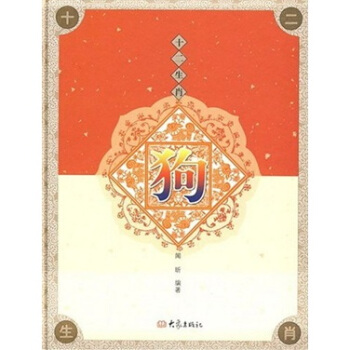
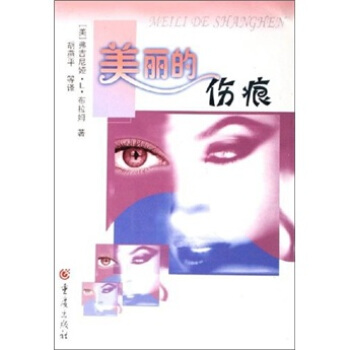
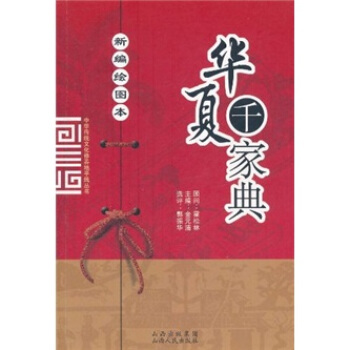
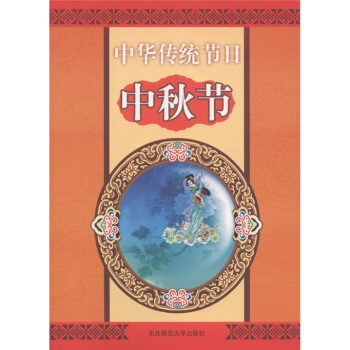
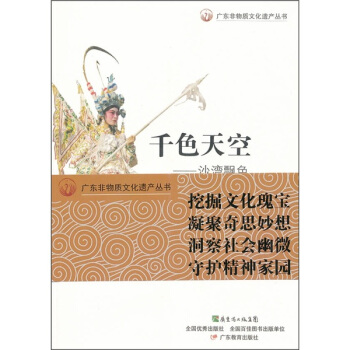
![江南文化研究:宋濂研究專輯(第5輯) [Jiangnan Culture Studies] pdf epub mobi 電子書 下載](https://pic.tinynews.org/10884606/830a34d4-17e9-44d4-a8f1-60a6d02d84e8.jpg)
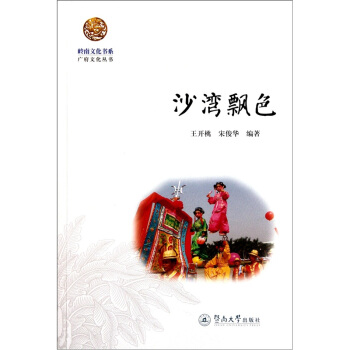
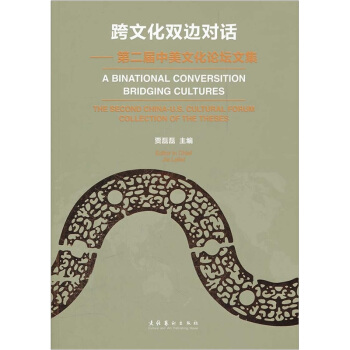
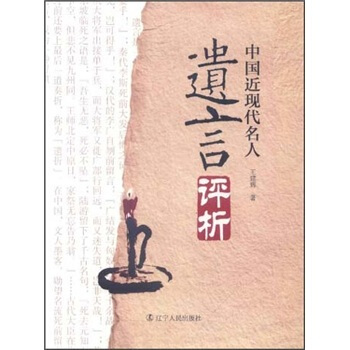
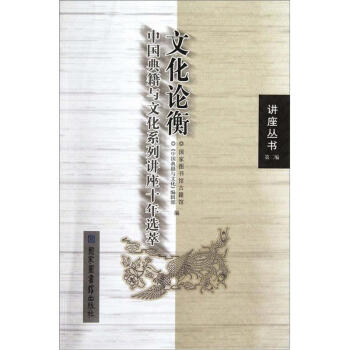
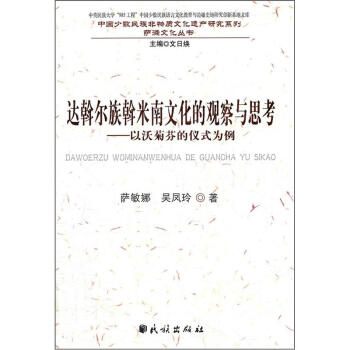
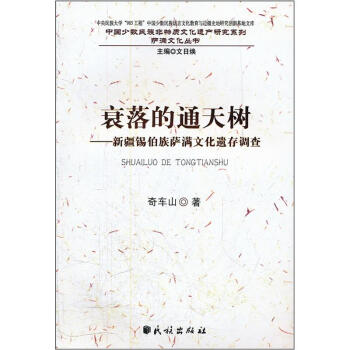
![文化建築 [When Culture Meets Architecture] pdf epub mobi 電子書 下載](https://pic.tinynews.org/11064954/rBEHaFA19iEIAAAAAAEPjK5HKhMAAAHXAGQHkMAAQ-k214.jpg)
